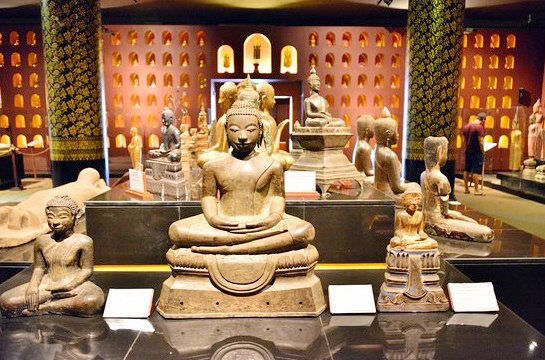
The Angkor National Museum opened in November 2007, and its freshly painted, shopping center-like feel appears differently in relation to the thousands-year-old artefacts contained inside it. The Angkor National Museum is situated on the Charles de Gaulle Road (primary street driving toward the Angkor Temples) with 20,000-square-meter building just before Grand Raffles Hotel close to the focal point of town.
A visit is very comfortable with air-conditioner by visiting the temples and a nice educational supplement to the history of Angkor Wat in the event that you visit the museum without a tour guide. It has eight separate galleries; all associated by a vaulted corridor with a series of fountains and fixed with what appears like all the Angkorian limestone lion and evil heads missing from statues at the sanctuaries. After an informative film screening called Story behind the legend, you're indicated the galleries:
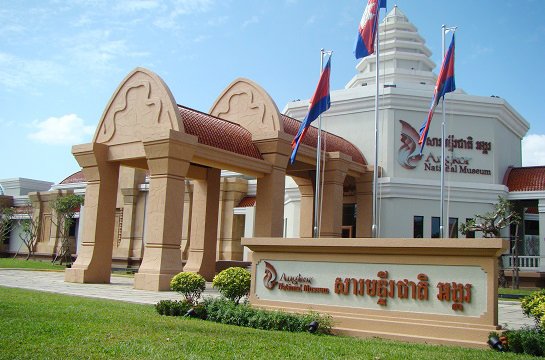
Gallery 1: 1,000 Buddha Images
This is the main gallery that is only one huge room, instead of a series of maze-like alcoves, and the sight of all these Buddhas at once is striking. Many small and miniature Buddha figurines, made of metals, gems and wood, all separately lit up, line the walls here, distinguished by the period they were made amid and where they were found. The life- size and bigger Buddha characters are shown inside. The show incorporates Buddhas from Banteay Kdei, Bayon, Angkor Wat and Preah Vihear.
Gallery 2: Pre-Angkor Period
This gallery and all the subsequent ones join mural-size explanations and short movies through maze-like rooms clarifying Angkorian history. The styles of figurines precede the trademark Angkor style, and there's an expansive gathering of lingas, lintels and colonnettes.
Gallery 3: Religion and Beliefs
This room clarifies a few of the most significant Hindu and Buddhist religious stories and folk tales portrayed on Angkorian sanctuaries, including the most important Churning of the Sea of Milk engraved into the rear wall at Angkor Wat. Carvings of Buddhist and Hindu religious figures are concentrated here also.
Gallery 4: The Great Khmer Kings
The gallery concentrates on King Jayavarman II, Yasovarman I, Soryavarman II and Jayavarman VII, those most in charge of Angkor's greatest constructions. Figures of the rulers and relics from the sanctuaries they dispatched flourish.
Gallery 5: Angkor Wat
There's a substantial film gallery inside this area of the museum. It highlights wonderful, panoramic pictures of the sanctuary and clarifications of how it was built. There are likewise many reestablished figures from the sanctuary itself and also post-Angkorian wooden statues utilized for worship at the sanctuary until a few hundred years ago.
Gallery 6: Angkor Thom
Notwithstanding recuperated ancient rarities from Angkor Thom, this gallery incorporates a history of and artefacts from the huge water system projects commissioned by the king who manufactured Angkor Thom with his smiling face watching out from each tower: Jayavarman VII.
Gallery 7: Story From Stones
This room is a standout amongst the most fascinating. It's a gathering of stone pallets with old Khmer and Sanskrit engravings. The written work on each slate is clarified on placards below. The written work on them incorporates the announcement of the establishment of a new hospital, mediations of land disputes and adulations of kings and gods.
Gallery 8: Ancient Costume
From Apsaras and kings to princesses and warriors, this room contains the busts and statues of particular designs and styles as they advanced all through Angkor time. There's additionally a collection of ancient jewelry and headdresses. It's an astute segue to the last room - the gift shop - where upscale imitations of these styles flourish.
It costs $12 to enter the museum, plus another $3 if you need to bring your camera in and another $3 for an educational headset. Unfortunately, such as ticketing and administration of the Angkor park, the museum is owned and run by a private company, so little of your admission money goes to Cambodia or to sanctuary restoration but the company paid for the concession.
Open 7 days a week from 8.30am until 6.30pm, you can anytime during these hours. We'd recommend allowing at least an hour to see the entire museum.
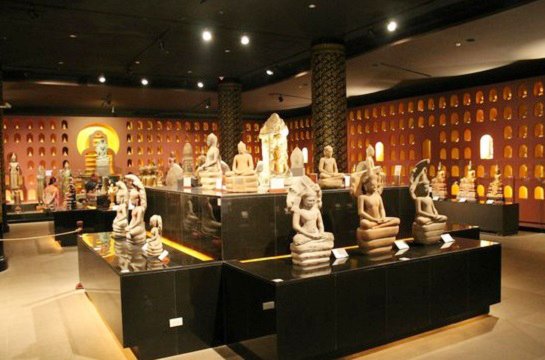
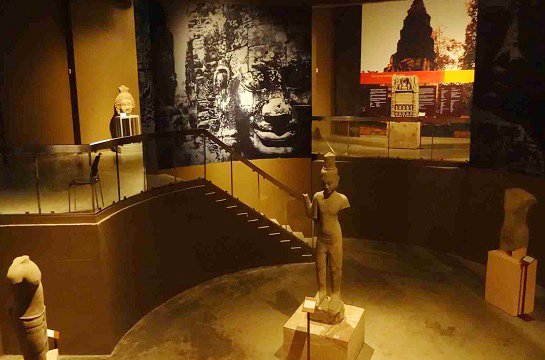
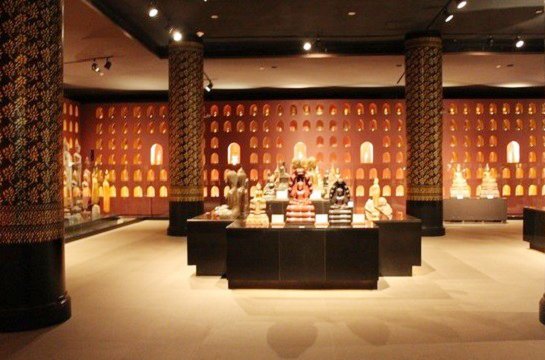
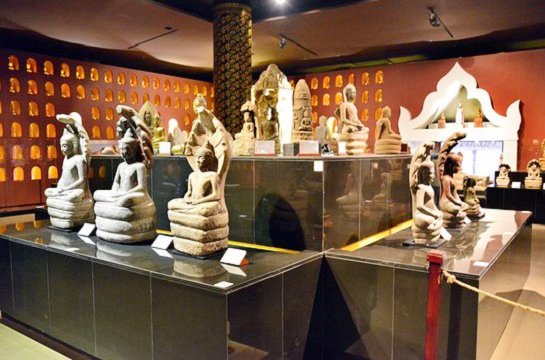
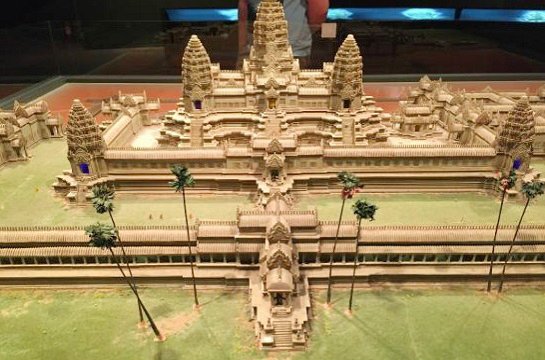
Some related articles:
- Cambodia #15: Kulen Mountain - Lychee Mountain
- Cambodia Temple #14: Ak Yum Temple (Cambodia Temple-Mountain)
- Cambodia Temple #13: Beng Mealea Temple - An Amazing Brick Temple
- Cambodia Temple #12: Bakong Temple
- Cambodia Temple #11: Banteay Kdei Temple
- Cambodia Temple #10: Preah Palilay Temple
- Cambodia Temple #9: Chau Say Tevoda Temple
- Cambodia Temple #8: Baksei Chamkrong Temple
- Cambodia Temple #7: Preah Ko Temple
- Cambodia Temple #6: Neak Pean Temple
- Cambodia Temple #5: Takeo Temple
- Cambodia Temple #4: Bayon Temple
- Cambodia Temple #3: Banteay Chhmar Temple
- Cambodia Temple #2: Banteay Samre Temple
- Cambodia Temple #1: Banteay Srei Temple

Great place to visit in Siem Reap.
I totally recommend spending an afternoon in this museum before visiting the temples. You'll understand so much more about the temples and the mythology of the Khmer people.
Yes it is true. Thanks for enjoying an amazing temples and places in Cambodia.
awesome pictures.must up vote
Thanks
A must visit place once in a lifetime. God knows whether I'll be able to see these beautiful places or not before I die.
I think you can.
Great post about the mesuam and i like thank you
Thanks for enjoying this article.
Great post....upvoted frnd....
Thanks for your comment.
Oh great, I really like the detailed description in the post! I also been to Cambodia but never visited this museum @chathan
I also write about my travels check it out :)
Followed and upvoted
upvote and follow me @zalb together we can succeed and share interesting stories!
You can follow me at @chantha and not @chanthan. Thanks for enjoying and I will check your blog too.
Really I love your series about Cambodia so much.. continue please :)
Thanks and I will.
Thanks